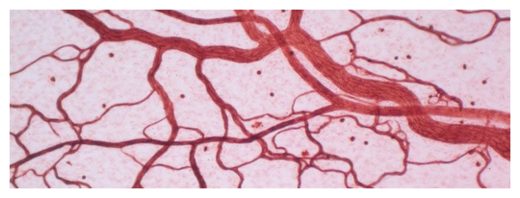In the past year and a half, about every other week, I do a "practitioners" call, in which we spend about 15 to 30 minutes talking about heart disease and strophanthus. As many of you know, one of the main themes of my book was that blocked coronary arteries are not the sole or even the predominant reason that people have heart attacks or chest pain. In these short calls, which are free to any licensed health practitioner, I talk a little about how I arrived at this conclusion and how strophanthus addresses heart disease.
In the latest call, I was joined by nine practitioners, one of whom was a cardiologist from Southern California. After hearing me speak, he asked whether I had heard of the growing trend of more and more women having heart disease in spite of totally clean coronary arteries. He pointed out that this phenomenon was becoming a subject of considerable interest in the conventional cardiology community. He also sent me a very interesting study, which addresses this subject directly.
The study is from the European Heart Journal (2014) 35, 1101-1111. The title is "Coronary Microvascular Dysfunction: An Update," and the authors are Filippo Crea, et. al, basically, a group of cardiologists from around the world. The study is an update of the role of microvascular disesase (what I call the collateral circulation) in the etiology of heart attacks and angina. In reviewing the scope of the incidence of patients with evidence of heart disease who have completely clean coronary arteries, the authors conclude:
Estimates from the WISE database show that there are at least 3-4 million patients in the USA alone with signs and symptoms of ischemia despite no evidence of obstructive atherosclerosis.The WISE database is the predominant place where information on heart disease is gathered. This statement means that millions of patients who have existing heart disease have clean coronary arteries. The relevance of this finding is that if a patient goes to a cardiologist who does an angiogram because the patient is having chest pain, finds clear arteries and then pronounces the patient to be fine, their conclusion is unwarranted. In fact, millions of such people will go on to have heart attacks in spite of clear coronary arteries.
A second statement from the article is perhaps even more interesting:
Conversely, a number of patients with severe coronary atherosclerotic obstructions do not experience angina. Accordingly, in a recent study, about half of the consecutive patients with acute coronary syndrome, a first manifestation of CAD, undergoing coronary angiography exhibited a multi-vessel disease.This observation strongly suggests that pre-existing obstructive CAD had been silent probably because preserved microvascular function, and more importantly, adequate collateral development prevented angina and ischemia in spite of obstructive CAD.As I have said in my book, in other writings and directly to scores of patients, many people can have even severe coronary artery disease yet experience no symptoms and no signs of dysfunction. The above statement is saying that at least half of patients with even severe obstructions have no signs or symptoms of dysfunction. A compensation mechanism must be involved, which is the collateral circulation. Again, as I have repeatedly pointed out, heart disease is more than blocked arteries.
A final interesting conclusion of the study is:
TN (troponin) elevation during PCI occurred in one-third of patients (study by Testa et al). At 18-month follow up, peri-procedural TN elevation was associated with a 50% increased risk of subsequent major cardiovascular events, a twofold increased risk of death, a threefold increased risk of MI, and a 50% increased risk of re-PCI.This statement means that one-third of the patients who undergo a stent procedure (called PCI) have evidence of damage to their heart as a result of the procedure itself. And these people with damage from the stenting have a dramatically higher incidence of death, heart attacks or needing further stenting in the one to two years following the procedure. When this fact is combined with the final quote -
Initial stent implantation for stable CAD shows no evidence of benefit compared with initial medical therapy for prevention of death, nonfatal MI, unplanned revascularization, or angina -meaning, there is no expected benefit in any parameter measured from putting a stent in a stable patient (which is probably around 95 percent of the stent procedures), we have to wonder why there are still so many stent procedures preformed in the U.S. and around the world.
When we realize that, for a procedure with no expected benefit, one incurs a dramatically increased risk of provoking a heart attack or even death, isn't it time to find a new way to look at and treat the epidemic of heart disease? I am certain that strophanthus/ouabain is one of the components of this new way of looking at and treating heart disease. Strophanthus improves the microcirculation, gets rid of the lactic acid build-up that causes pain and dysfunction in the heart, and balances the autonomic nervous system. Strophanthus, as the many case studies I have published show, improves heart function for many people suffering from heart disease.
If you are a practitioner or a patient interested in strophanthus/ouabain for the treatment of heart disease, please contact us at (415) 334-1010 or frontdesk@fourfoldhealing.com, and join us as we slowly revolutionize the treatment of heart disease in this country.




Reader Comments
to our Newsletter